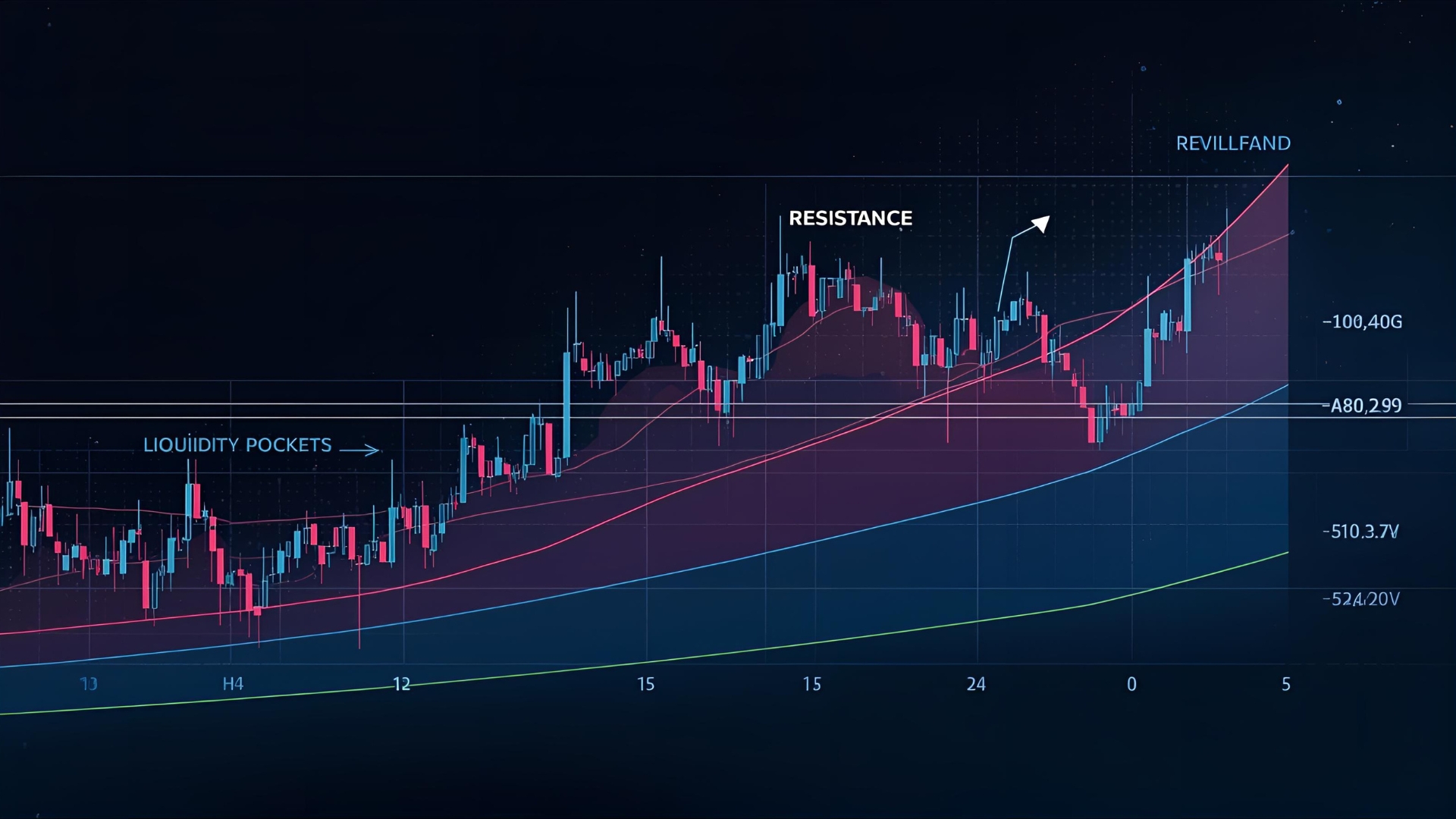
Bitcoin Analysis Today Price Outlook Trends & Strategy
Fresh Bitcoin analysis today—price levels, trends, on-chain signals, and trading strategies explained in plain English. Actionable insights for BTC right now.
In a market that never sleeps, “Bitcoin analysis today” is one of the most searched phrases among traders, investors, and curious newcomers. That makes sense: Bitcoin moves fast, sentiment flips in hours, and macro headlines can ripple through the crypto market in minutes. This in-depth guide delivers a structured, plain-English walkthrough of the forces shaping BTC price today—from technical analysis and on-chain metrics to macro factors, liquidity, and positioning.
You’ll learn the levels that matter, what different indicators are truly saying, how market structure influences short-term volatility, and which risk management techniques can keep your portfolio intact through the swings. Whether you’re day-trading or dollar-cost averaging, this article helps you turn raw information into a coherent plan.Unlike hype-driven commentary, we’ll slow down and unpack each concept.
We’ll examine support and resistance, trend health, momentum, Fibonacci retracements, RSI, MACD, moving averages, funding and open interest, and realized price cohorts. We’ll also connect those dots to macro drivers like liquidity cycles, interest-rate expectations, and correlations with risk assets. By the end, you’ll have a practical framework for reading Bitcoin analysis today—and for adapting when the market shifts tomorrow.
The State of the Trend What Uptrend or Downtrend Really Means
The first step in any Bitcoin analysis today is to define the prevailing trend across multiple timeframes. Many traders jump straight into lower-timeframe scalps without situating those ideas in the bigger picture. That’s a mistake, because a strong higher-timeframe trend will dominate most short-term setups.
Higher-Timeframe Structure
On the daily and weekly charts, the simplest way to assess structure is to track higher highs and higher lows in an uptrend (or lower highs and lower lows in a downtrend). Layer in the 200-day moving average (200DMA) to gauge long-term bias, and the 50-day moving average (50DMA) for medium-term momentum. When price trades above both, with the 50DMA above the 200DMA (a classic golden cross), trend conviction is strong. If the 50DMA rolls over or price loses the 200DMA, caution is warranted even if the news flow feels bullish.
Intermediate Context
On the 4-hour and daily timeframes, swing structure can tell you whether pullbacks are healthy or symptomatic of trend fatigue. A shallow retracement that respects prior resistance turned support is typically constructive. Deep retracements that slice through multiple demand zones without a decisive bounce suggest distribution rather than simple profit-taking.
Lower-Timeframe Flow
The 1-hour and 15-minute charts often capture liquidity hunts—those sharp wicks above recent highs or below recent lows that reset leverage. In a confident uptrend, dips are bought quickly and failed breakdowns snap back. In a tired market, bounces are sold and failed breakouts get stuffed. Reading this behavior alongside funding and perpetual futures positioning sharpens your map of what comes next.
Key Levels Support, Resistance, and Liquidity Pockets

Support and resistance are the backbone of Bitcoin analysis today because they frame risk and reward. Think of them as zones, not single price tags. Markets rarely pivot at a precise tick; they react within bands where orders cluster.
Building the Level Map
Start with the weekly and daily swing highs and lows; mark prior consolidation areas where price spent time building value; note volume profile high-volume nodes (HVNs) where transactions stacked up; and identify gaps or thin zones where price moved quickly in the past. The latter often act as liquidity pockets the market revisits.
Role Reversal
When price convincingly breaks a ceiling, that former resistance often becomes support on retests. The cleaner and more widely watched the level, the more reflexive the response can be. But remember: widely watched levels also attract stop orders and can be used for stop-runs. A quick wick through a level doesn’t automatically invalidate it; watch whether acceptance holds above or below after the dust settles.
Momentum & Mean-Reversion: RSI, MACD, and Moving Averages
Momentum oscillators aren’t crystal balls, but they contextualize moves. Combining indicators helps filter noise and prevents over-reliance on any single tool.
RSI in Practice
The Relative Strength Index (RSI) highlights overbought (70+) and oversold (30−) conditions, but the most valuable signals come from regime behavior. In strong uptrends, RSI often spends extended time above 50 and repeatedly bounces from 40–50 without resetting to 30. That “strong bull range” tells you pullbacks are likely mean-reversions within trend. In bear phases, the mirror image applies: RSI caps out near 60 and lives below 50.
MACD for Trend Health
MACD—the relationship between fast and slow EMAs plus its signal line—flags inflection points. A bull cross above the zero line is stronger than one below it, because it aligns with positive momentum. Conversely, a bear cross below zero adds weight. Use MACD to confirm what price and structure already suggest, not to front-run against the tide.
Moving Averages as Dynamic Levels
The 20-EMA and 50-EMA on the 4-hour and daily charts often serve as dynamic support in uptrends. Loss of the 20-EMA with rising volume may foreshadow deeper tests toward the 50-EMA or a horizontal level. Combine these with Fibonacci retracements—the 38.2% and 61.8% zones frequently align with moving averages, forming confluence.
Volume, Liquidity, and Open Interest What’s Powering the Move
Price without volume is flimsy. True breakouts usually come on expanding participation, while fades on shrinking volume are prone to reversals.
Spot vs Perps
When spot markets lead, rallies are typically healthier and more persistent. When perpetual futures drive the move—especially with rising funding rates and ballooning open interest (OI)—expect volatility. A stacked long side with positive funding can unwind violently on bad news or a swift liquidity sweep. Conversely, heavily shorted markets can spring higher as short covering fuels squeezes.
Open Interest and Liquidation Pools
Track OI at major venues and watch for cumulative liquidations near obvious highs/lows. Those pools act like magnets. When price approaches a cluster of stops, a stop-run can produce a fast spike, followed by either continuation (if genuine demand steps in) or a sharp mean-reversion if it was mostly a flush.
On-Chain Metrics Under the Hood of Bitcoin
On-chain analysis remains a unique edge in Bitcoin analysis today because it reveals holder behavior—data that doesn’t exist for most traditional assets.
Realized Price Bands
The realized price—the average price at which coins last moved—can be segmented by cohorts (short-term vs. long-term holders). When spot trades above the short-term holder realized price, those recently in profit are less likely to panic sell, stabilizing pullbacks. Sustained trade below that band can trigger capitulation among weak hands.
HODL Waves and Dormancy
HODL waves measure the age distribution of coins. Rising dominance of older coins implies steadfast conviction, while a surge in young coin activity suggests churn and speculation. Average coin dormancy rising during rallies can hint at long-held supply starting to distribute—often a caution flag near local tops.
Exchange Flows
Net exchange inflows can precede sell pressure, while sustained outflows into cold storage often align with accumulation regimes. Context is key: one big inflow may be an OTC desk reshuffling wallets; look for trends, not isolated prints.
Macro Drivers Liquidity, Rates, and Correlations
Bitcoin doesn’t float in a vacuum. The US dollar index (DXY), Treasury yields, global liquidity, and risk-asset appetite all shape BTC behavior.
Dollar and Yields
A strengthening DXY often pressures risk assets, including BTC, as global liquidity tightens. Rising real yields raise opportunity costs for speculative positions. Conversely, expectations of rate cuts or easing can boost liquidity-sensitive assets like Bitcoin.
Equities Correlation
Bitcoin’s correlation with Nasdaq-style growth stocks ebbs and flows. In risk-on windows, correlations can spike; during idiosyncratic crypto cycles (e.g., post-halving runs or ETF catalysts), BTC may decouple. Don’t assume correlations are static—check rolling correlation windows and adapt your risk accordingly.
Strategy Playbook Turning Analysis Into Action
Great analysis is wasted without a plan. Your Bitcoin analysis today should conclude with a limited set of trade ideas that map to different market outcomes, each with predefined risk.
Trend-Following with Pullbacks
In a healthy uptrend, look for pullbacks to support—prior highs, 20-EMA/50-EMA, or Fib retracements (38.2% / 50%). Enter on evidence of re-acceptance: a higher-low on the 1-hour, a reclaim of the 20-EMA with strengthening volume, or a bullish divergence on RSI. Risk goes below the invalidation level (the recent swing low or the base of the zone). Targets stair-step through nearby resistance.
Breakout-Retest Continuation
When price consolidates under a well-defined ceiling, a break-and-retest entry can offer clean invalidation. Wait for the breakout to hold through a session close on the target timeframe, then enter on the retest if it prints supportive candles (long lower wicks, tight closes, increasing volume). Avoid chasing vertical candles into untouched resistance—patience reduces slippage and whipsaw.
Range Trading
If Bitcoin is ranging, define the range high and range low, then trade the edges with confirmation. Fade deviations back inside the range; target the midline first, then opposite boundary. In ranges, mean-reversion is your friend; trend indicators are less useful.
Managing Leverage and Risk
Even the best crypto setup can fail. Keep position sizes consistent. Risk a small, fixed percentage per trade. Use stops—mentally or hard—based on market structure rather than arbitrary dollar amounts. If using perpetuals, monitor funding and your maintenance margin; let the market be volatile, not your account balance.
Sentiment & Narrative Reading the Crowd Without Joining It
Crypto runs on narratives. Rotations between altcoins and BTC, ETF headlines, regulatory chatter, or protocol upgrades can hijack price in the short term. While you shouldn’t chase every headline, sentiment gauges help contextualize risk.
Funding, Basis, and Social Activity
Consistently positive funding and stretched futures basis suggest exuberance; deeply negative funding coupled with rising OI often precedes short squeezes. Surges in social mentions after a big move are typically late; if your feed “feels” euphoric or despairing, the market may be near an inflection.
Putting It All Together A Daily Bitcoin Analysis Routine
Creating a repeatable, 20-minute routine will improve your decisions and reduce emotional trades.
Top-Down Scan
Check weekly/daily trend and mark major levels. Note the 200DMA/50DMA, trendlines, and where price sits relative to them. Identify obvious liquidity pools above/below.
Momentum & Volume
Assess RSI, MACD, and EMAs on the daily and 4-hour. Is momentum aligned with structure? Is volume confirming moves or fading? Has open interest ballooned?
On-Chain & Flows
Glance at exchange flows, short-term vs long-term holder behavior, and any notable dormancy changes. If spot is leading and outflows are steady, dips may be healthier.
Macro Snapshot
Note DXY, Treasury yields, and equity index futures. Are we in a risk-on or risk-off session? Has a central bank event or data print shifted expectations?
Plan & Execute
Write down one or two setups with entries, invalidations, and targets. If nothing lines up, do nothing. Cash is a position, and discipline compounding beats impulsive trades.
Also Read:What Bitcoin Price Today Live BTC Updates & Analysis
Risk Scenarios What Could Go Wrong Or Right

An effective Bitcoin analysis today includes a short list of risk cases.
Bear Case Checklist
Price loses a key support like the 200DMA and finds acceptance below it on rising volume; RSI fails to reclaim 50; MACD turns down below zero; funding stays positive even as price drops (complacent longs); exchange inflows increase; DXY rips higher and real yields rise. In this regime, rallies into resistance are sells until proven otherwise.
Bull Case Checklist
Price holds above reclaimed resistance turned support; dips are shallow and quickly bought; spot volume leads; RSI bull range persists; MACD crosses up above zero; open interest grows with balanced funding; exchange outflows continue; macro shifts to risk-on. Here, pullbacks are buys and break-and-retest setups have higher odds.
Investor Lens Beyond Trading
Not everyone needs to trade. For long-term investors, dollar-cost averaging (DCA) smooths entries across volatility. Pair DCA with investment theses—e.g., Bitcoin as digital gold, a scarce asset reinforced by the halving cycle—and set allocation rules you can keep during both euphoria and fear. Avoid over-optimization: the goal is staying invested according to plan, not timing every wiggle.
Psychology The Hardest Edge to Maintain
Markets tempt you to abandon plans. Build guardrails: pre-define max daily losses, adopt journaling, and reduce screen time after executing your plan. The difference between “seeing a setup” and “taking a setup” is the discipline to wait for confirmation. Your P&L will thank you.
Conclusion
“Bitcoin analysis today” doesn’t have to be a firehose of conflicting signals. Start with market structure and key levels. Use momentum indicators to confirm, not predict. Pay attention to volume, open interest, and funding to understand who’s driving moves. Lean on on-chain metrics for a view into holder behavior, and keep one eye on macro for context. Finally, translate all of that into a handful of actionable strategies with clear invalidations and risk limits. Repeat this routine, learn from each session, and you’ll transform noise into signal.
FAQs
Q: What makes Bitcoin analysis today different from a weekly outlook?
A: A daily view emphasizes short-term structure, liquidity runs, and positioning shifts that can trigger swift moves within hours. A weekly outlook focuses on the broader trend, multi-week support/resistance, and macro cycles. Both matter; the daily zoom tells you how to act, while the weekly chart tells you whether your idea fights or follows the tide.
Q: Which indicators are most reliable for BTC right now?
A: No single tool is foolproof. A robust combo is structure + volume + RSI/MACD. Add 20/50-EMAs for dynamic support, monitor funding and open interest for crowd positioning, and consult on-chain exchange flows for context. Look for confluence—multiple signals aligning—before you risk capital.
Q: How do I avoid fake breakouts?
A: Require acceptance above the breakout level: a close on your chosen timeframe, rising volume, and ideally spot leadership. If perps lead with overheated funding and bloated OI, be skeptical. Breakouts that run directly into untouched resistance often fail; break-and-retest entries are cleaner.
Q: Is on-chain data necessary for short-term trades?
A: Not necessary, but helpful. Short-term traders can rely heavily on price action, volume, and positioning. On-chain shines when it reveals structural accumulation/distribution or changing exchange flows that may underpin or contradict price. It’s a secondary lens that adds confidence to your bias.
Q: What’s the best risk management rule for volatile sessions?
A: Cap risk per trade (e.g., 0.5%–1% of equity), pre-define invalidation levels based on market structure, and avoid stacking correlated positions. If using leverage, size down and watch funding. A hard “stop trading” threshold for the day prevents revenge trades after a loss, preserving mental capital for the next setup.







